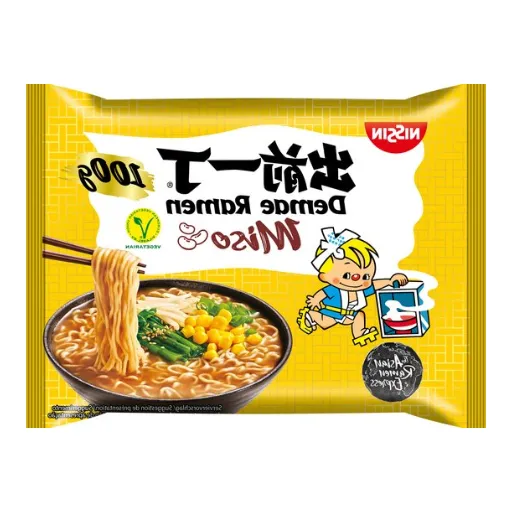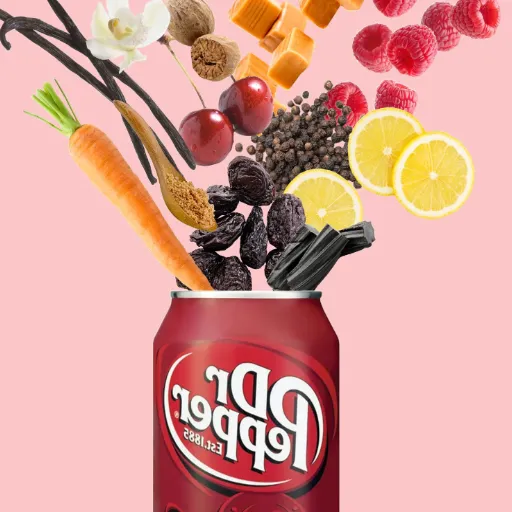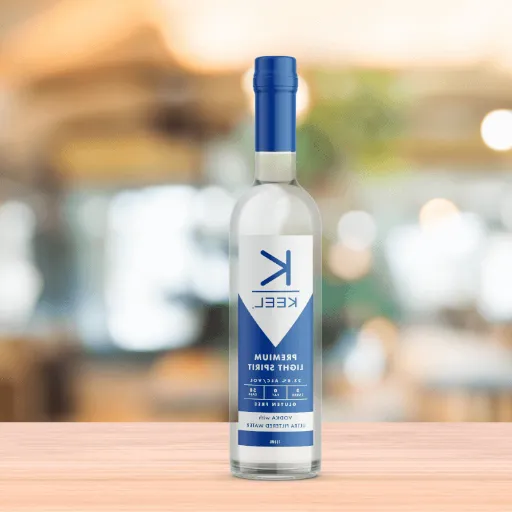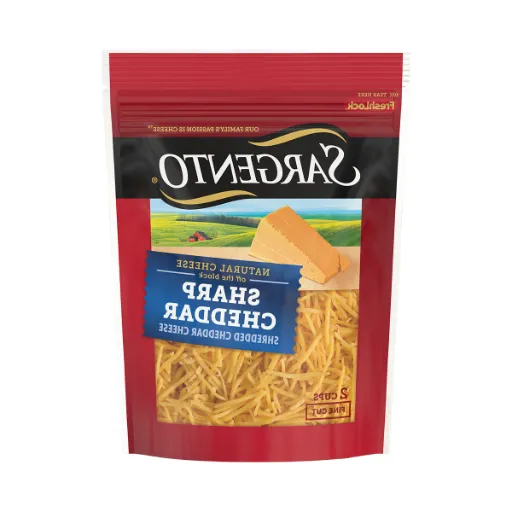One international sensation favored by millions all over the world would be noodles. At the center of this phenomenon sits Nissin Foods, an iconic brand that has forever changed how we see and enjoy our bowl of ramen. What upgraded Nissin Foods from a small concern to an international company? It is the legacy of innovation and quality, ty with unforgettable flavors. This article explores the intriguing history of Nissin Foods Ramen, its cultural implications, the art behind crafting numerous varieties, and its present-day influence on the world of instant noodles. So, whether you are a crazy ramen person or would simply love to know more about the comfort food’s vector, let us show you why Nissin Foods remains at the forefront of culinary creativity.
Introduction to Nissin Foods
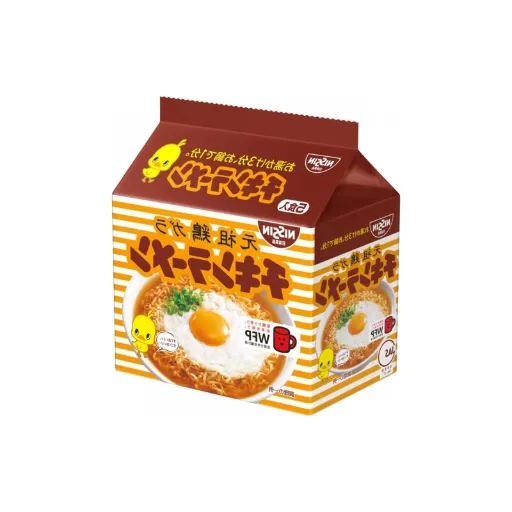
History and Founding of Nissin Foods
The company was created out of pure need after World War II. It was made in Japan by Momofuku Ando in 1948. His mission was to provide for those in need during the famine-wracked period after the war. After realizing that people needed cheap, fast, and easy food, he went on to invent the world’s first instant noodles, Chikin Ramen, in 1958. This invention greatly altered the manner in which noodles were perceived and prepared and, incidentally, launched the worldwide instant noodle culture.
The impulse for invention did not end here. Another industry first was born in 1971. Fidelity to convenience and accessibility were the guiding principles in developing Cup Noodles. Combining pre-cooked noodles with a container that carries with it the special feature of portability and ease of use transformed the whole aspect of quick food preparation for food consumers all over the world. This product really set a new benchmark for packaging convenience and remains the hallmark product of instant noodles.
Nissin Foods remains an eminent figure in the food industry, integrating innovative ideas with tradition. Starting with a small plant in post-war Japan, the company has grown and expanded worldwide, offering thousands of flavors and products to satiate the palate of millions around the world. The company is a pathbreaker in the instant noodle sector owing to a passion for womanly concern for quality, affordability, and some ingenuity in earth-shattering solutions.
Momofuku Ando: The Innovator Behind Instant Ramen
Momofuku Ando is a man with a brilliant mind who changed the food industry through the invention of instant ramen. Born in Taiwan in 1910, he traveled to Japan and worked to alleviate food shortage issues after the war. His dream was to develop something quick to cook, easy to prepare, and cheap to help the poor feed on what little they had. After several years of experimenting in a small backyard shed, Ando ushered almost into instant noodle production when in 1958 he made available outside the world the first instant noodle product, “Chikin Ramen,” which changed forever how consumers would look at noodles.
The invention does look very brilliant because of its simplicity. Giving the noodles a treatment of steaming, seasoning, and flash-frying allowed them to be preserved for an extended shelf life while at the same time being prepared in minutes with mere hot water. This was both a technological breakthrough and a cultural change, placing an inexpensive option before all the higher classes. Instant ramen solutions eventually gave rise to another invention- Cup Noodles-in 1971, which provided the ultimate portability and convenience by combining noodles with a disposable cup.
Plus other of Momofuku Ando’s efforts go on beyond just his product innovations and inventions. Peace through food and the idea that everyone ought to have access to food were things this man ardently believed in. His work ethic, principles of perseverance, and ability to innovate left a profound impact on the global food market. Today, Ando is remembered not only as the father of instant ramen but also as a symbol of creativity and resilience, inspiring generations of entrepreneurs across various industries. His legacy continues to thrive as Nissin Foods adapts his foundational ideas to meet modern demands.
Global Reach and Influence of the Brand
With presence in over 100 countries of the world, Nissin Foods has quite proudly given the crown of instant noodles to Nissin. The primary cause of the international appeal is the ability to balance regional tastes and consumer preferences with the need for quality and affinity of price in their products. By formulating region-specific flavors and broadening its product gamut, Nissin has stayed competent in appealing to a wide overseas population.
The inventive offering style of branding has quite deeply contributed to consolidating the brand’s influence. Consumers of all sorts perceive campaigns on convenience, versatility, and taste. Making co-branding with fun brands, giving promotions with interesting packaging, and sponsoring international events further built Nissin as a household name. Instant noodle products such as Cup Noodles have moved from just symbols to real culture-shapers ideating instant gratification of food in a very fast-paced life.
Further, Nissin Foods is instrumental in the development of world food culture as it approaches challenges concerning food security and sustainability. Environment-friendly packaging and plant-based product development speak of a deep-rooted abiding commitment to innovation and contemporary values. With its widely spread distributive network and focus on serving international needs, Nissin Foods remains a huge contributor to the shaping of food industry and development on the world stage.
The World of Ramen
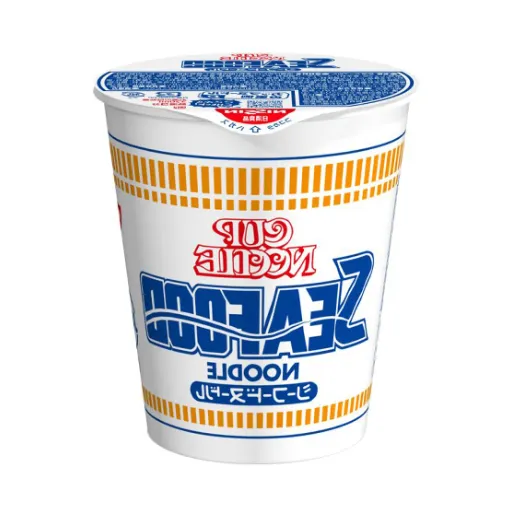
Understanding Ramen: Types and Regional Variations
Ramen is a universal-yet-favorite item that has changed drastically through time while mingling with Japanese. Diversity in ramen refers not only to tastes but also to the various peculiarities of regional influences and traditional methods. Increasingly it has been reported that four main types of ramen are considered according to their broth-base: shoyu (soy sauce), shio (salt), miso (fermented soybean paste), and tonkotsu (pork bone). Each type gives a different palette experience from shio’s light and savory to tonkotsu’s heavy and creamy.
A further layer of culinary complexity is added by regional variations of ramen. For example, Sapporo ramen from Hokkaido is characterized with a miso-based broth and thick, curly noodles, often topped with corn, butter, and seafood. Whereas Hakata ramen from Fukuoka is well-known for its velvety tonkotsu broth and thin, straight noodles served with green onions, pickled ginger, and slices of tender chashu pork. Tokyo-style ramen usually uses a slightly sweet soy-based broth with medium thick noodles and a wide variety of toppings, including nori and boiled eggs. These regional specialties reflected how local ingredients and preferences shape the ramen experience.
Understanding the various types and origins of ramen will provide one with insight into its cultural importance, as well as the ingenuity behind each bowl. The combination of tradition and innovation continually places ramen on the global culinary map.
The Cultural Significance of Ramen in Japan
Ramen enjoys a tremendous following in Japanese culture. It grew out of being a cheap, quick meal into a full-fledged art form. Its simplicity and adaptability have enabled ramen to bond citizens across all levels of life-from time-pressed students to celebrated chefs. Now, ramen is not merely food-anymore, it has become a cultural symbol for innovation, regional identities, and Japan’s spirit of craftsmanship.
Each bowl has its story, as regional types reflect into the tastes, climates, and resources of the many prefectures of Japan. Miso ramen of Hokkaido and Shio ramen of Hakodate are at one end of the scale, while at the other, there is a lighter taste and delicate saltiness. Therefore gatherings are set not far from regional celebrations. Yet in more modern times and on a bigger scale, ramen has been able to give new life into various businesses that, in some instances, extend to the ramen museum or shovel instant noodle creations.
The yearly events like the Tokyo Ramen Show embody a deep appreciation for cuisine like ramen, where chefs stood for cutting-edge innovations with taste while paying respects to the traditional way. And this synthesis of creativity and traditional technic has propelled the popularity of ramen across the globe, making it a bridge between Japan and the rest of the world. Being an evolution from comfort food to gourmet has proved the proficiencies of Japanese people in marrying the simple and complex; thus where it stands is as a living icon of their culture heritage.
Ramen vs. Other Asian Noodle Dishes
Ramen-style cooking involves wheat-based, alkaline noodles with rich and varied broths. Other noodles-laden Asian dishes, like pho, use thin rice noodles with light, aromatic broths.
| Aspect | Ramen | Pho | Pad Thai |
|---|---|---|---|
| Noodle Type | Wheat, alkaline | Rice, flat | Rice, thin |
| Broth Base | Rich, pork/chicken | Light, beef/chicken | None |
| Flavor | Savory, umami | Aromatic, herbal | Sweet, tangy |
| Toppings | Egg, pork, seaweed | Herbs, lime, beef | Peanuts, tofu |
| Origin | Japan | Vietnam | Thailand |
Popular Nissin Products

Top Ramen: A Classic Favorite
From Nissin Foods, Top Ramen has made a name for itself as one of the world’s most famous instant noodle brands. The product came into the market in the early 1970s, having immediately found favor with consumers for convenience and price, plus an array of flavors. With its trademark curly noodles and seasoned packet, Top Ramen is perfect for any kitchen, dorm, or office. Being so easy to prepare and versatile, it caters to tastes from all walks of life and is a quick and fulfilling treat for all.
Top Ramen has changed as well to suit the consumer’s changing demands. From Chicken, Beef, Shrimp, and Traditional to more exotic flavors like Soy Sauce and Chili Lime, there is one to suit almost every palate. Vegetarian and lower-sodium versions also have been introduced to help those from a health perspective while still offering that comfort taste people cherish.
Beyond the ordinary instant noodle supper, Top Ramen has become an ingredient in many elaborate recipes. Foodies have fried it, boiled it, and baked it as casseroles. Given its cheap price point and versatility, it is almost always on the list of cheap eats; likewise, with the nostalgia that comes with it, its appeal stretches across generations. Over the past 50 years engaged in this marriage of popularity and innovation, Top Ramen has become an ageless icon in instant noodle foods.
Nissin Chikin Ramen: The Iconic Flavor
The Chikin Ramen stands for a special status in the context of instant noodles as a product that launched the industry. Introduced in 1958 by Momofuku Ando, it was among the very first instant ramens in the world. Intended to be quick, convenient, and tasty, Chikin Ramen soon began to really appeal to the people as a revolutionary food product. The intense chicken flavor, the strong seasoning yielding an intense experience, and the noodles’ texture offering a different chewiness felt like a well-rounded meal-a few minutes were all it took to prepare. The concept of selling pre-cooked dried noodles combined with their accompanying seasoning was able to revolutionize food habits in the post-war era.
Things that make Nissin Chikin Ramen iconic are its impressive history and the timeless appeal. The base chicken flavor was conserved throughout the years, allowing for only minor updates that ameliorate taste and texture. Popular among families, students, and individuals alike, it is an inexpensive filling meal. The package still retains a bit of nostalgic appeal, with bold elements that remind consumers of its origin story. Nissin has not neglected limited edition flavors and collaborations that lure newer consumers while keeping the older ones gripped.
This particular brand takes sustainability and innovation in the food industry very seriously. It has thus envisaged in the reduction of environmental footprint via packaging that is environmentally friendly and via ingredient sourcing that has been done in a sustainable manner. It has also taken in health improvements through reduced sodium instant noodles and enhanced nutrients. In doing so, Nissin Chikin Ramen upholds its heritage while staying relevant in an ever-changing world, making sure this culinary classic is enjoyed by all generations.
Cup Noodles: Convenience Meets Taste
Cup Noodles have changed an entire approach to fast food by combining convenience, affordability, and an excellent taste reaction. Since the year 1971, Nissin Foods has evolved the production of Cup Noodles to feed into the growing desire for fast, decent food. The meal-in-a-pod going to fame throughout the world for so easy preparation-it’s simply pouring in some hot water, along with an extended roster of flavors that vary with the local palate. From regular chicken and beef to spicy seafood and curry, Cup Noodles meet thousands of different needs, becoming a universal solution for people.
Over the years, Cup Noodles have been adapted and modified by Nissin to suit consumer demand and modern-day food trends. The healthier variants, with less sodium, no added MSG and air-fried noodles as opposed to fried noodles, cater to people inclined towards a health-conscious life. Sustainability seems to be one of the priorities with the new initiatives geared towards recyclable packaging and responsible sourcing of ingredients. These changes show how the brand is still evolving while holding on to the very values that made the product famous.
Beyond convenience and taste, Cup Noodles carries cultural appeal, holding resonance for students, busy working people, and even travelers looking for a good meal to eat on the go. The meal that is inexpensive and requires no refrigeration has become one of the essential items stored in pantries and backpacks all over the world. Concerted efforts in marketing and advertising, often involving crossovers and collaborations with other brands and organizations, have kept the positioning of Cup Noodles current and sexy. Whether for the average person or those who especially like to eat good food, Cup Noodles provides, more than just sustenance, an age-old example of ingenuity and accessibility.
Flavor Innovations and Trends
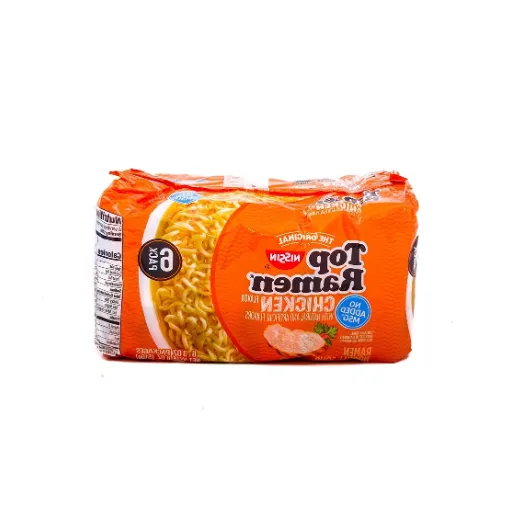
Expanding Flavor Profiles: From Traditional to Modern
Over the years, Cup Noodles has set up its elite brand by intermixing antique tastes with new-age ones for its global consumer profile. The old flavors of Soy Sauce, Chicken, and Beef remain well-embedded in the product library-the quintessential stuff of home and comfort. These staples form the base upon which the brand stands, building its strong appeal to a coarse consumer base.
At the same time, the new flavor palettes respond to the craze for loud, unheard-of pairings coming from international culinary inspirations. Spicy Korean-style Kimchi, Tom Yum, and Indian Curry serve as some examples of cultural intermixing. Furthermore, the limited releases have capitalized on regional tastes, designing the brand into one that can quickly adapt-whether it’s Seafood for Asia or Chili Lime for Latin America.
Thus, diversification essentially points at how fast the brand responds to culinary trends and how well it recognizes consumers’ cravings for nostalgia and novelty. By taking traditional recipes and blending them with contemporary ones, Cup Noodles offers products with ample dynamism to appeal to everyone.
Emerging Trends in Instant Noodle Flavors
The walk through the modern instant noodle industry tells such an account of a changing era with changing consumer preferences and global trends establishing themselves. There has been growing demand for healthy options, allowing for the introduction of low-sodium, whole-grain, or plant-based varieties by noodle manufacturers. These are consumed by a population of health-conscious consumers opposing their food-for-comfort philosophy in favor of nutritional value. Adding superfoods such as seaweed, kale, or quinoa to instant noodle recipes has gained favor among those who respect wellness along with ease of preparing food.
Moreover, the potent boldness of true regional tastes showcases an even bigger push for culinary exploration and cultural authenticity. Traditional dishes such as Malaysian laksa, Thai tom yum, or Korean jjajangmyeon are increasingly being adapted into the instant noodle counterpart. This very trend is strengthened by international food tourism and the multitude of platforms that enable users to share and discover world cuisine. Limited-edition restaurant collaborations or the use of high-end ingredients such as truffle or Wagyu beef can further upscale the classic comfort food.
Another important trend is considered sustainability, with consumers and producers having increased awareness about environmental issues. All these concerns about eco-friendly packaging, the reduction of single-use plastics, and materials sourced in a sustainable way somehow struck a chord in the minds of consumers who are ethically conscious in today’s world. From the perspective of environmental responsibility, this question minimizes the ecological footprint of the industry itself and also aligns with consumer needs for brands that participate in global sustainability-oriented goals. Now, aided by these advancements, from several different directions, the instant noodles are progressing into an elegant product-category, able to actively respond to the needs of widely divergent consumer demographics.
Cooking and Enjoying Nissin Ramen
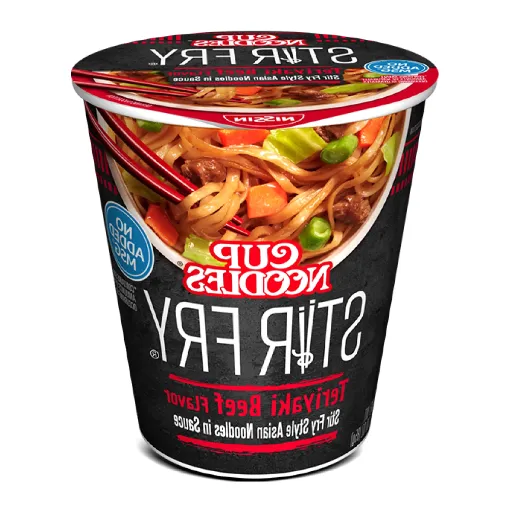
Tips for Preparing the Perfect Bowl of Noodles
To achieve the perfect bowl of instant noodles, one must pay attention to the little things and master the art. So, boiling water at the recommended temperature is the first step. This is commonly around 212°F (100°C), as such temperature is needed to hydrate and cook the noodles properly. Ensure that you measure the water quantity accurately as instructed by the manufacturer. Too much water causes dilution of the broth flavor; on the other hand, water in very small quantities results in uneven cooking of noodles. A gentle stir after placing the noodles into the boiling water will keep them from clumping and ensure even cooking.
Timing matters specially in instant noodles; if it is overcooked, they’ll be alright and undercooked will render an unpleasant firmness. Most companies advise cooking times ranging from 2-4 minutes. While the noodles cook create the seasoning: if it contains oil or paste, dissolve it thoroughly in a little hot water before adding it to the noodles, to guarantee that aromas will be evenly distributed.
For an even greater dish, one may add soft-boiled eggs, fresh vegetables like spinach or bok choy, or some proteins: tofu or thinly sliced meat. Not only do these ingredients add nutritional value, but they also add texture and flavor complexity. Finally, serve immediately so that one can enjoy the best noodle texture with the hot and aromatic broth.
Creative Recipes Using Nissin Products
The product range from Nissin offers immense flexibility, serving as an excellent base for experimenting with new dishes classified as innovative and scrumptious. One of the applications is adapting the traditional Nissin Cup Noodles into the stir-fry version, which coats all the bases in flavor and nutrition. Simply make the noodles as per product directions and drain thoroughly. Heat a bit of oil in the wok or skillet and toss in your choice of protein against chicken, shrimp, or tofu. Toss in the fresh veggies; bell peppers, carrots, or maybe broccoli. After this goes the seasoning packet while you stir-fry for a nice finish with either soy sauce or oyster sauce. It becomes a quick stir-fry that helps land in the food land combining a little comfort with a little nutrition.
Another inventive recipe could use Nissin Top Ramen as a crunchy topping or crust. Prepare the noodles dry, crushing them into small fragments before coating chicken tenders or fish fillets with it for frying or baking. The unique noodle texture creates a crispy golden crust that gives a complex and fun twist to fairly straightforward proteins. Serve alongside a dip or sauce, such as tangy sriracha mayo or sweet chili sauce, to enhance the flavor contrast of the crunchy coating.
For those who yearn for a comfort food passage, consider making a baked noodle casserole with Nissin. The cooked noodles are stirred together with béchamel sauce, shredded cheese, and extras like diced ham, mushrooms, and spinach. It is then poured into a baking dish, top coated with breadcrumbs and grated parmesan, and baked until bubbly and golden. This dish reinterprets the Nissin products into a proper and filling meal that can be shared together. Such creative approaches pay testament to the great versatility that Nissin products afford. They allow the home cook freedom of creativity while savoring convenience and bold flavors.
References
- Shifting Perceptions of Instant Ramen in Japan During the High-Growth Era, 1958-1973
This paper explores the historical and cultural impact of instant ramen in Japan, including Nissin Foods’ role in shaping the market during the postwar period. - Raman on Ramen: Nutritional Analysis and Brand Identification
This study analyzes the nutritional composition of instant ramen and highlights Nissin Foods’ contribution to making ramen a cultural icon. - The Composition of Quantitative Nutritional Analysis Using Raman Spectroscopy
This research discusses the introduction of Nissin Foods’ Chikin Ramen, the first instant ramen product, and its significance in the food industry. - Instant Noodles: Are They Really Good for Health?
This review examines the health implications of instant noodles and provides historical context on Nissin Foods’ development of Chicken Ramen in 1958.
Frequently Asked Questions (FAQ)
Q: What is Nissin Foods Ramen?
A: Nissin Foods Ramen refers to any variety of instant ramen noodle products manufactured by the Nissin Foods Company that originated in Japan. Known for flavorful seasoning and handy packaging, Nissin’s ramen has become an everyday kitchen staple, with Cup Noodles® being the crowd’s favorite.
Q: Who came up with instant ramen?
A: Instant ramen was created by Momofuku Ando, a Taiwanese-Japanese businessman. He established Nissin Foods in 1948 and introduced the first instant ramen, thereby revolutionizing the way noodles were consumed by making them convenient and reasonably priced.
Q: What is the history of Nissin Foods?
A: Nissin Foods was established in 1948 by Momofuku Ando in Osaka, Japan. The company put out the first commercial brand of instant ramen, which really made a hit and gave birth to numerous other kinds of products, including that ever-famous Cup Noodles®.
Q: What does Cup Noodles® consist of, and how are they different from regular ramen?
A: Cup Noodles® represents the very convenient instant ramen on sale in a cup. Unlike regular ramen, Cup Noodles® are a quick meal option since you only have to put some hot water inside. Because of this, they are quite popular among those looking for a fast and delicious meal.
Q: What are the popular flavors of Nissin Foods Ramen?
A: Nissin Foods Ramen includes a wide array of flavors that include chicken, beef, shrimp, and spicy. These flavors can cater to various tastes and preferences so that everyone can find an appropriate noodle soup to enjoy.
Q: How has the product range of Nissin flourished throughout the years?
A: The product line, in addition to daytime instant ramen and cup noodles, has lng grown to accommodate the creation of different types of ramen noodle soup as well as a freeze-dried variety. Going to different markets and customer preferences in the U. S. and internationally would require this approach.
Q: What keeps Nissin Foods Ramen in so much demand?
A: Nissin Foods Ramen remains popular because of its delicious taste, convenience, and wide range of flavors. The company has marketed its ramen since the 1970s and continues to keep the noodle-watchword especially alive in the U. S. market.






